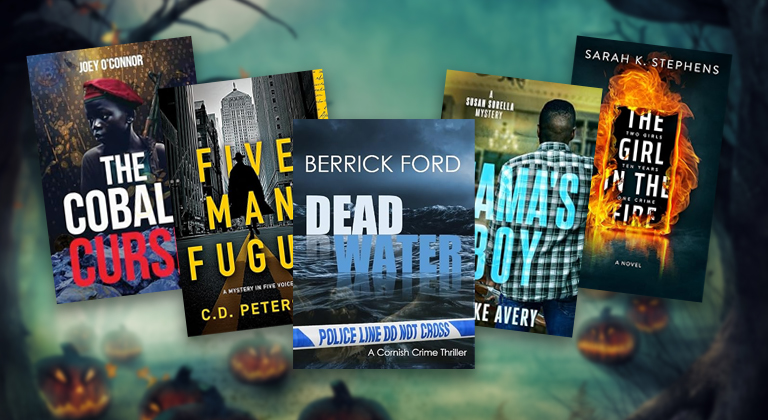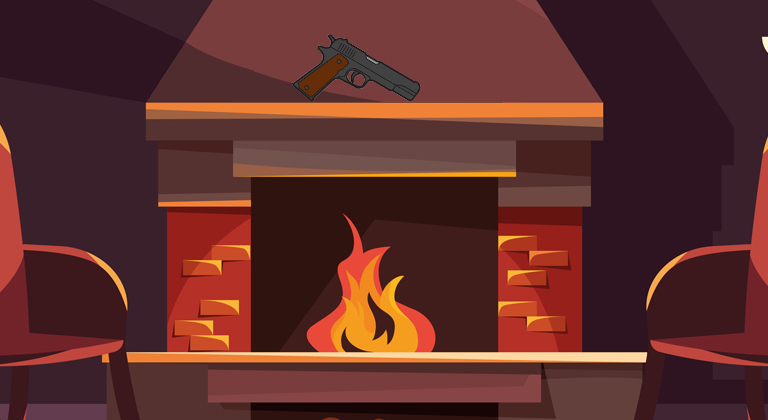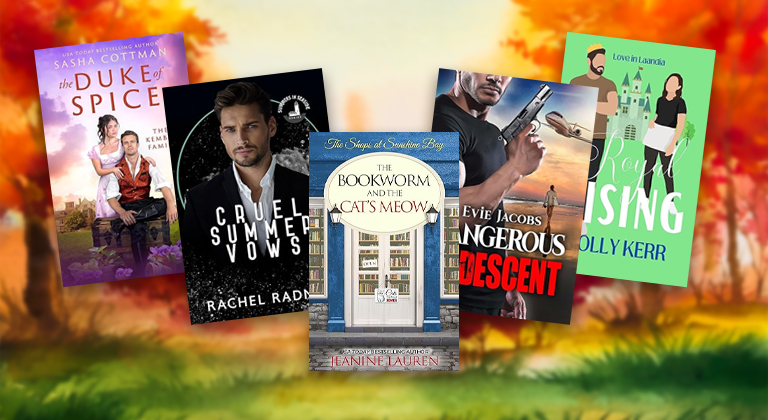Exploring the Potential of Non-linear Storytelling
Navigating the world of storytelling can sometimes lead us to question the rigidity of traditional narrative structures recently discussed on this blog. Not all stories fit neatly within those conventional frameworks, yet they can still captivate and resonate with audiences. One intriguing approach to this challenge is non-linear storytelling, where the sequence of events is intentionally shuffled, defying the expected chronological order. This technique has found a place in both popular literature and blockbuster films, albeit with mixed success.
Adopting a non-linear timeline can be highly effective in some instances, but it also carries the risk of confusing the audience or disrupting the natural flow of the narrative. In today’s post, Ginger guides us through the nuances of non-linear storytelling to help us master this approach. He outlines the potential pitfalls and shares examples where this powerful storytelling technique can achieve maximum impact. By learning how and when to weave events out of chronological order, we can unlock new dimensions to our tales, leaving a profound and lasting impression on our readers.
I’ve been blogging a lot about story structure recently, and that’s led to some interesting email and real-life discussions about how to effectively plot a story. One question I got asked was: “How do you fit your story into a structure when what happens at the beginning doesn’t fit what the story structure requires?”
That’s quite an interesting question, and one I think a lot of plotters struggle with. If you follow a classic story structure like Save the Cat or Dan Harmon’s Story Circle, you’re expected to have key scenes early in your narrative in which specific things happen that engage the reader and move the story forward. However, in the step-by-step chronology of what happens to your characters, you might not actually have those scenes show up until later in your narrative. So how do you bend what happens chronologically to fit within a tightly defined story structure?
One potential solution is to adopt a non-linear timeline.
Now, I’ve written before about how writers can use time effectively in their stories, but I wanted to dig a little deeper into non-linear storytelling specifically in this post. After all, it’s one of the most innovative techniques writers can employ to captivate their readers – yet it’s also a technique that’s employed pretty rarely in mainstream fiction.
The Power of Non-linear Timelines
Non-linear storytelling is when you write scenes outside of the chronological order of events within your story – starting off with a scene from the end of your story, for example, and then writing in flashback so readers can learn how the characters got to that later point. It’s kind of like the way an episode of the Dukes of Hazzard would start with the General Lee flying over a river, before the picture freeze-framed and Waylon Jennings drawled: “Now, y’all probably wonderin’ how the Duke boys got themselves into this mess…”
Weaving your narrative this way means you can begin your tale at a more exciting and engaging moment in the story, which is a great way to hook readers early on. You can also use it to infuse your story with additional intrigue and suspense, surprising and challenging readers with new information that reframes how they’re interpreting the unfolding action. You can even use this technique to achieve a deeper level of thematic resonance within your story, by having earlier events set up what the reader knows is going to happen later.
That being said, and even though we’re about to start exploring non-linear storytelling, it’s worth taking a moment to appreciate the value of traditional, linear storytelling first.
The Perils of Non-Linear Storytelling
Weaving a tale that takes place in the traditional, chronological order of events isn’t to be sniffed at. It IS the most logical way to tell a story, after all, and it makes it much easier for readers to keep up with important events. If nothing else, it’s what most people expect when they open up your book.
So before delving into non-linear timelines, I think it’s worth considering whether your story benefits from the technique, or if it adds the risk of confusing readers. I recently watched the Star Wars series Andor, for example, and that had a timeline which jumped around quite dramatically; and I’ll admit that I had to figure out when some scenes were supposed to be set based on the characters’ haircuts!
Likewise, the MCU movie Captain Marvel, which was the first Marvel movie to receive significant criticism, featured a non-linear storyline – revealing a lot of information about the titular hero’s background during flashback scenes towards the end of the movie. This might have been one of the reasons why it wasn’t embraced as enthusiastically as earlier Marvel films, since the non-linear timeline wasn’t really necessary because most people watching the movie could work out the “twist” with the character and her origins on their own. Personally, I think the film would have been more successful if they’d just told the tale in the order in which it happened – and the folks over at ScreenCrush even produced an entire video arguing that same point!
So, you shouldn’t jump into non-linear storytelling unless you have a very good reason to do so. It’s a powerful writing technique that can come off as gimmicky if it’s not done well.
The Potential of Non-Linear Timelines
However, such reasons do exist, and because at its core storytelling revolves around the art of engagement, telling your tale out-of-order can be an incredibly effective way to harness that engagement. Here are some examples:
Using a Non-Linear Timeline for Dramatic Effect
Although it’s a movie, not a book, I really wanted to use Pulp Fiction as an example of non-linear storytelling. Director Quentin Tarantino changed Hollywood when this movie was first released in 1994, revitalizing the industry with a bold and unpredictable narrative structure that grabbed viewers by the throat and refused to let go. Instead of adhering to a linear progression, the film intertwines multiple storylines, jumping back and forth in time with seamless precision, and is able to pull off some really powerful surprises as a result.
Pulp Fiction keeps viewers on the edge of their seats as they’re forced to piece together the interconnected tales of hitmen, boxers, and mobsters. The technique provides a lot more dramatic impact than the film would have had if these interconnected stories had been told in the “right” order. By shuffling the chronology of events, Tarantino crafted a riveting narrative that defied conventions and left a lasting impact on cinema. If you’re looking to subvert a reader’s expectations in a similar fashion, this might be why a non-linear timeline is right for you.
Using a Non-Linear Timeline for Emotional Impact
Another reason why a non-linear timeline might be more effective than telling your story chronologically is for the emotional impact it can create. A great example of this from popular literature is Slaughterhouse-Five by Kurt Vonnegut, first published in 1969.
The story follows the experiences of Billy Pilgrim, a World War II soldier who becomes “unstuck in time,” meaning he experiences events from his life in a non-linear fashion, jumping between different moments in time without control. Throughout the novel, Billy’s consciousness jumps between different periods of his life, often triggered by seemingly mundane events or sensations. These time skips are depicted in a matter-of-fact manner, as if they are simply part of Billy’s reality. He finds himself reliving moments from his childhood, his time as a prisoner of war in Dresden during World War II, his post-war life as an optometrist, and even moments from his future.
Vonnegut uses these time skips to emphasize the chaotic and arbitrary nature of human existence, as well as the way in which traumatic events can haunt an individual’s consciousness. By presenting Billy’s experiences in a non-linear fashion, Vonnegut highlights the sense of disorientation and dissociation that often accompanies trauma; and forces his readers to experience the same thing by rearranging the sequence of events. It’s an emotional gut-punch of a book and much of that impact is derived from the non-linear timeline.
Using a Non-Linear Timeline to create a Mystery
One of the most effective ways authors can use a non-linear timeline is by creating a mystery through telling the story out-of-order. There’s a lot of satisfaction to be found by reading a book that teases vital pieces of information, but only reveals the whole story at the end. Non-linear storytelling is a powerful way to do this, because you can show protagonists doing things in the future which seem wildly out of character, and then explain their motivations through scenes set earlier in time.
The Time Traveler’s Wife by Audrey Niffenegger is a great example of this. Niffenegger’s debut novel unfolds the unconventional love story of Henry, a time-traveling librarian, and Clare, his non-traveling wife. Through alternating perspectives and non-linear jumps in time, the novel explores the complexities of their relationship, transcending the constraints of linear storytelling. By juxtaposing moments of intimacy with instances of temporal dislocation, Niffenegger crafts a poignant narrative that resonates with readers on emotional and philosophical levels. The book is constantly full of surprises that only make sense later as you learn about things that occurred to the characters out-of-sequence.
Using a Non-Linear Timeline to craft a Saga
Growing up, I used to read a lot of “saga” books – thick, chunky paperbacks that told the tale of different generations of the same family. Non-linear storytelling was a common component of this, because it could show how the choices characters from one generation made would ultimately impact their descendents.
Cloud Atlas by David Mitchell is a fine example of this. Mitchell’s ambitious novel comprises six interconnected narratives spanning centuries, from the 19th century to a distant post-apocalyptic future. Through its kaleidoscopic structure, Cloud Atlas intricately weaves themes of reincarnation, interconnectedness, and the cyclical nature of history into connected stories that span time and space – and suggest that people never really die as long as the impact they made in their lives carries on.
Conclusion
It’s definitely not for everybody, but I believe that non-linear timelines offer self-published authors and aspiring writers a powerful tool for crafting engaging and impactful narratives that challenge a reader’s complacency.
By subverting chronological order, writers can imbue their stories with intrigue, suspense, and thematic depth. Drawing inspiration from cinematic masterpieces like Pulp Fiction and acclaimed literary works like The Time Traveler’s Wife , aspiring storytellers can explore the boundless possibilities of non-linear storytelling and learn how to use it themselves when creating stories that engage, inspire, and challenge readers and leave a lasting impression in their minds.
What are your thoughts on non-linear storytelling? I’d love to hear your opinion – both as a writer and reader. Don’t be shy about leaving a comment below!












I’ve written four crime novels so far. The first two non- linear and the second two linear form. I personally think the second book, which has the strongest nonlinear structure, is the best. However, although it gets very good reviews from those who finish it, most of the readers say it is too complicated and about half give up on it. As an additional problem I have made use of Polari (a language used by the gay fraternity when it was still illegal in the UK to be gay) which adds to the confusion!